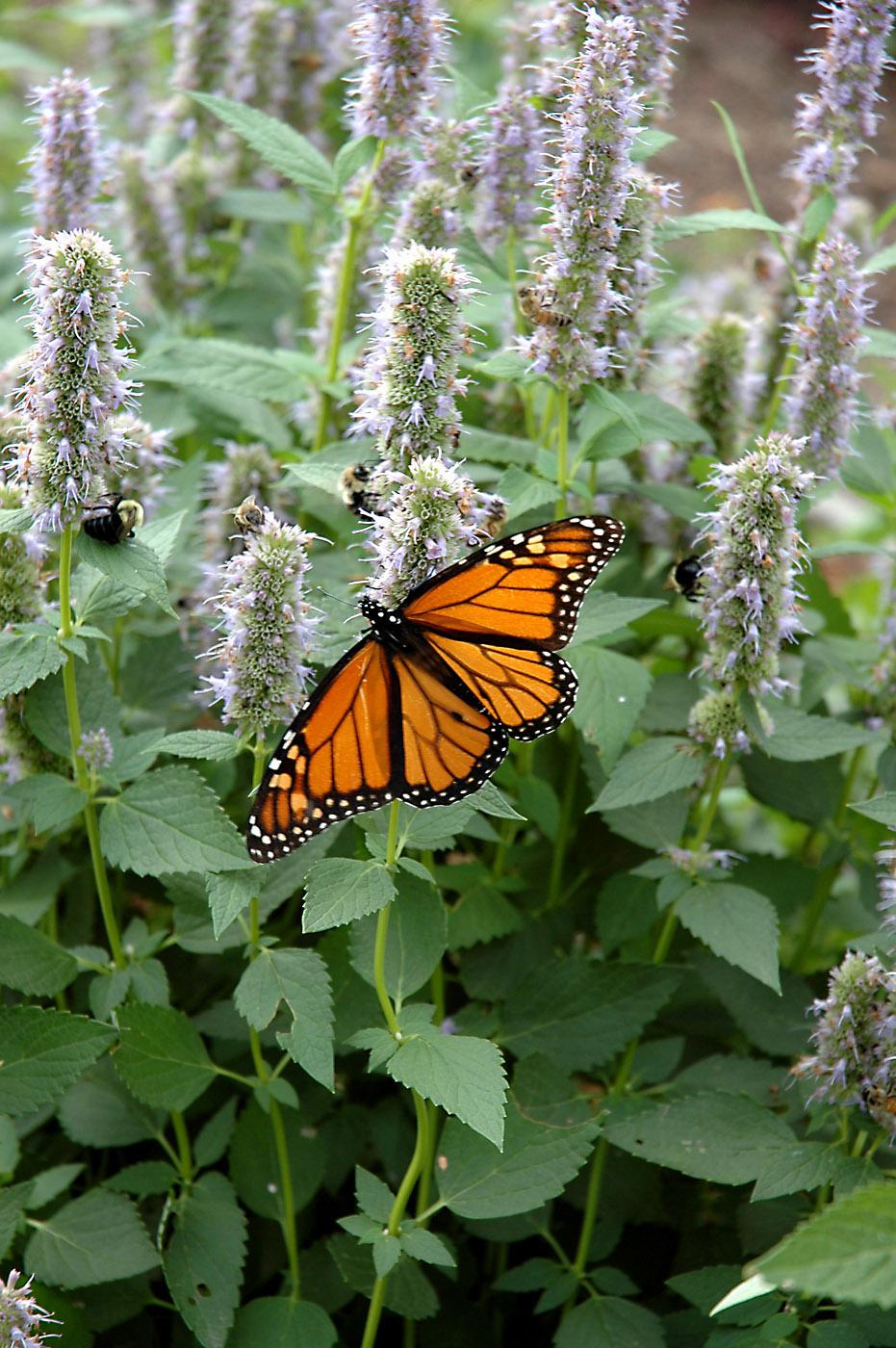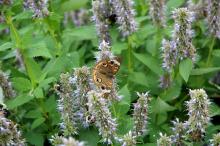Information Possibly Outdated
The information presented on this page was originally released on November 8, 2007. It may not be outdated, but please search our site for more current information. If you plan to quote or reference this information in a publication, please check with the Extension specialist or author before proceeding.
Blue Fortunes are like gold to butterflies, bees
By Norman Winter
MSU Horticulturist
Central Mississippi Research & Extension Center
With cold weather arriving and the holiday season nearly upon us, I could write about fall leaf color or cool season flowers, but I cannot pass up the opportunity to tell you about Blue Fortune agastache.
This plant deserves the utmost in accolades, and I say that after observing its performance the first week in November. We've been growing them at our Truck Crops Experiment Station in Crystal Springs, and Blue Fortune mesmerized me and the TV crew filming our Southern Gardening news segment.
Blue Fortune is related to other well-known plants like salvia and coleus and is a tough perennial hardy from zones 5 to 9. Herb lovers have been growing this plant under the common name anise hyssop for years. They relish its licorice scent, its beauty and its tough nature.
Every kind of bee in the neighborhood loves the light blue-lavender flowers, and that is what caught my attention. The plants had so many bees that they could have been used in some horror movie. As a child, I would have avoided those flowers like a den of viperous snakes. But as an adult knowing the struggle facing our honeybees, I watched with joy.
It was a warm November morning and the bees were in a state of bliss. This (gracefully) aging horticulturist will not quickly forget the buzzing sounds and movement. In addition to the bees, there were butterflies galore feasting on the Blue Fortune. I saw Gulf Coast Fritillaries, Monarchs and the Buckeye, which I hadn't caught on camera before.
I talk about flower combinations all the time and how attractive the complementary color scheme is. Orange is the opposite of blue, so this garden had the complementary color scheme in motion, thanks to the orange butterflies and the lavender-blue flowers.
The Blue Fortune agastache plants reach about 20 to 36 inches tall. Select a site in full sun for best blooming and to keep the plants compact. The soil should be fertile and well drained; raised beds work very well. Plants are easy to grow from seeds and germinate in 7-14 days. They produce bountiful bouquets the first year. Set out transplants in the spring 12 to 18 inches apart, or thin seedlings to the correct spacing.
Blue Fortune responds well to cutting back, so feel free to do so if the plants begin to look a little leggy or you simply wish they were bushier. The flowers are great for cutting and drying.
Though the plant is drought tolerant, water during prolonged dry periods for added flower production. Once plants have frozen in the fall, cut them back and cover with a layer of mulch.
Blue Fortune blooms all summer and will work with almost any flower partner. In our fall garden we combined them with Denise and Sparkling Cheryl chrysanthemums. For a true butterfly garden, use with other nectar flowers like lantana, zinnias and buddleia, and then have plenty of larval food sources from butterfly weed, dill, fennel and parsley.
In addition to Blue Fortune, look for Licorice Blue, the lime green-leafed version called Golden Jubilee, and white selections called Alabaster and Licorice White.
Plant cool season flowers now but keep Blue Fortune in the back of your mind for next spring.









